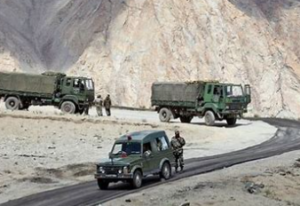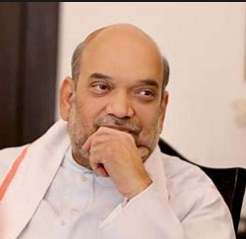
Home Ministry: Connectivity on border

The Indian government has taken a significant step towards strengthening the nation’s border connectivity. It has approved the implementation of 4G mobile services at over 1,100 border outposts along India’s international borders, including the one with China. This project, which is part of the Home Ministry’s year-end review, comes with a budget of ₹1,545.66 crore.
A tripartite agreement has been signed between the Ministry, the Department of Telecommunications, and Bharat Sanchar Nigam Limited (BSNL) to execute this project over the next six and a half years. The project aims to cover 1,117 border outposts and intelligence posts of the armed forces and the Intelligence Bureau, thereby enhancing the communication capabilities of these critical locations.
Progress and Challenges Mentioned by the Home Ministry

However, the journey towards achieving this goal has not been without its challenges. In the Union Territory of Ladakh, progress has been slower than expected. Out of the 379 villages and hamlets approved under the 4G saturation project this year, mobile phone towers have only been established at nine sites, with foundation work completed at 34 sites.
This backdrop to these developments is the ongoing standoff between India and China at multiple locations along the undemarcated Line of Actual Control (LAC) in eastern Ladakh since 2020. This has highlighted the critical need for robust communication infrastructure in these sensitive areas.
Infrastructure Development and Future Plans
In terms of border road projects, the Ministry reported that this year, 48.03 kilometers of roads were constructed along the China border, and four border outposts and three helipads were added. These developments are part of a broader strategy to enhance the nation’s border infrastructure.

Following the tragic incident at Galwan in Ladakh in June 2020, where 20 Indian soldiers lost their lives in violent clashes with Chinese forces, the Union government sanctioned the construction of 32 roads along the China border. This was revealed in a report presented in Parliament in 2022.

The report also mentioned that 32 helipads were being constructed and upgraded along the China border. The first phase of the India-China border road project (ICBR) began in 2005, with the Home Ministry deciding to construct 27 priority roads with a total length of 608 km along the border with China. The second phase of the ICBR project was approved on September 21, 2020.
The Ministry also reported that 184.39 km of roads were constructed along the Bangladesh border, and 120.06 km along the Nepal border. In total, 88 border outposts were constructed in 2023.

Lastly, the Ministry reported that 2.4 km of the border with Myanmar and 18 km of the border with Pakistan had been fenced. These developments underscore the government’s commitment to securing the nation’s borders and enhancing the living and working conditions of the personnel stationed there.
Empowering Border Areas: The Impact of 4G Connectivity

The Indian government’s initiative to bring 4G connectivity to border outposts represents a significant advancement in strengthening the nation’s telecom infrastructure. This move not only enhances the communication capabilities of the armed forces and intelligence posts but also improves the quality of life for locals residing in these areas. By ensuring better connectivity, the government is taking a crucial step towards securing the borders and fostering development in the country’s border areas. This initiative underscores the government’s commitment to digital empowerment and national security. It’s a testament to the transformative power of technology in bridging gaps and fostering connectivity even in the most remote and sensitive areas of the country.











